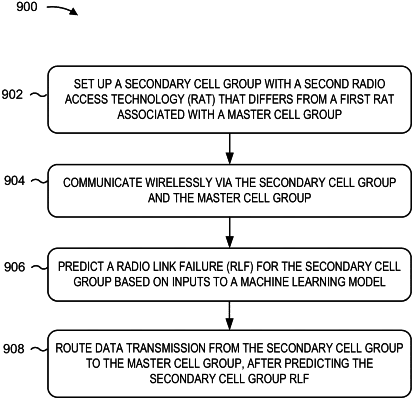| CPC H04W 40/18 (2013.01) [G06N 20/00 (2019.01); H04W 24/04 (2013.01)] | 27 Claims |

|
1. A method of wireless communication, by a user equipment (UE), comprising:
setting up a secondary cell group with a second radio access technology (RAT) that differs from a first RAT associated with a master cell group;
communicating wirelessly via the secondary cell group and the master cell group;
predicting a radio link failure (RLF) for the secondary cell group based on a plurality of inputs to a machine learning model, the plurality of inputs comprising at least one of a mean delay of radio link control (RLC) acknowledgment packets to new packet transmissions in a quantity of recent time slots, or scheduling request (SR) retransmission rate statistics; and
routing data transmission from the secondary cell group to the master cell group, after the predicting of the RLF for the secondary cell group.
|